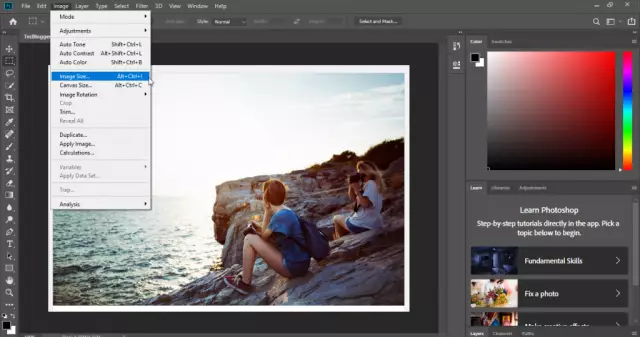Video files are considered one of the most cumbersome in the digital world. Sometimes it may be necessary to compress such a file, but reducing the size usually leads to a loss in the quality of the final product. However, you can minimize losses or even try to avoid them.

It is necessary
- • a computer;
- • video file;
- • availability of special software
Instructions
Step 1
More often than not, users are stumped when they first encounter analog video digitization. An ordinary, seemingly half-hour clip can take up to ten gigabytes. If there are several such films, then no disks will be enough to store it. Using the VirtualDub program and built-in codecs, the video size can be brought to quite acceptable without any quality loss.
Step 2
VirtualDub is free and you can download it either from the developers' site or from any free software directory. Moreover, VirtualDub has long had a Russian-language interface, so it won't be difficult to figure it out.
Step 3
Open your video file in VirtualDub program. The first frame of your movie will open in the program window. It is better to leave the audio track as it is, unchanged, so click the Audio item in the menu and select the Direct stream copy function. To process the video stream, press the Video and Full Processing mode buttons. The next step is to choose the type of codec for compression. Your best bet is to use the DivX codec. It compresses movies without affecting the quality, and besides, the video obtained in this way will play not only on a computer, but also on a regular home DVD player. Therefore, click again on the Video button and then on Compression. Select DivX Pro 5.0.3 Codec from the list of suggested codecs. Confirm your choice with the Configure button.
Step 4
An additional window will open for configuring the codec. On the Profile tab, check the box next to Use Bidirectional Encode. Go to the General Parameters tab and set the value of all sliders to the Normal position.
Step 5
On the Bitrate Parameters tab, first select Multipass, 1st pass, that is, Multipass compression, first pass. And then set the bitrate parameters. The higher the bitrate, the better the quality of the resulting video will be. Leave all other parameters unchanged. Click OK once and immediately a second.
Step 6
Now proceed directly to compressing the movie. Select File and then Save as AVI from the menu. As a result, you will receive a small file, this is not a video yet, this is only streaming information. Go to the codec settings again on the Bitrates Parameters tab and this time select the Multipass, nth pass option, literally Multipass nth pass. Click OK twice again and save the video in AVI format again as described above.
Step 7
Such double processing will generally require a little more time, but the video clip will not lose quality, and its volume will decrease by several orders of magnitude. The higher the quality of the original video, the better the result will be!
Step 8
To efficiently convert video files without losing quality, you need powerful equipment. You definitely need a computer, it will be difficult to convert videos from a smartphone or tablet. In addition, you will need special equipment. For example, a powerful and free utility that is suitable for any platform (Windows, MAC, Linux) might be, for example, the Handbrake program. Of course, you can use simpler programs, if the task is not to compress a large and complex file. You can find programs with Russian localization or use English-language programs.
Step 9
Lossless data compression is a method of compressing data (video, audio, graphics, digital documents). By using this compression, the encoded elements can be recovered with bit precision. The original data is completely recovered from the compressed state, which makes this method fundamentally different from lossy data compression. For each type of digital information, as a rule, there are optimal lossless compression algorithms. Such data compression is used in many applications, for example, in file archivers.
Step 10
Modern recording devices shoot in high resolution, so to save space on the device's memory or hard drive, you need to figure out how to compress video quickly and without losing quality. When editing, you need to keep an eye on the resolution, the absence of artifacts and the frame rate. These parameters are the main ones that determine quality. Usually, in order to compress video without losing quality, you need to sacrifice something: either bit rate, or resolution, or other important parameters. However, in some cases, it turns out to reduce the volume of the video by optimizing and translating into a more efficient format.
Step 11
First you need to prepare to compress your video. For this we need a special converter program. They usually have a visual, intuitive interface and are easy to use. Such programs do an excellent job of basic tasks. They allow you to reduce the size of a video file without losing quality, and perform other editing operations. Each of them has its own characteristics. It is best to use free programs that focus specifically on converting videos, because they are the most simple and straightforward to work with.
Step 12
After installing the program, add the file to it according to the instructions. Then information about duration, size, resolution, frame rate should appear. This will help you understand if you can compress video without losing quality using only this program.
Step 13
Another important parameter to remember when compressing video is changing the frame rate. It is better not to change the frame rate in the captured video files so that there is no loss in quality. But if you want to experiment with slow-motion shooting, you can try changing the frame rate using special programs.






